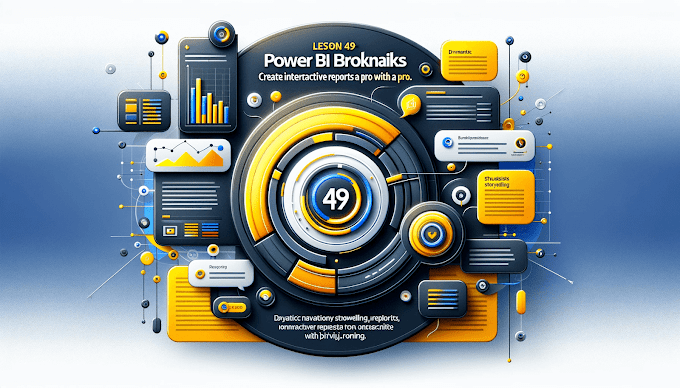Welcome back to Virvijay.com, where we simplify Power BI for you! 🎯
Have you ever faced slow Power BI reports? 😩
Waiting too long for visuals to load? 🕒
The Power BI Performance Analyzer helps you identify and fix slow reports!
In this blog, you’ll learn:
- What Performance Analyzer is.
- How to analyze report performance.
- Step-by-step guide to speed up slow visuals.
- Best practices for faster reports.
1️⃣ What is Power BI Performance Analyzer?
- 🔹 It’s a built-in tool in Power BI Desktop.
- 🔹 It shows how long each visual takes to load.
- 🔹 Helps find slow DAX formulas, visuals, and queries.
💡 Why Use Performance Analyzer?
- Identify which visuals slow down your report.
- Find inefficient DAX formulas.
- Optimize Power BI refresh speed.
- Improve overall user experience.
2️⃣ How to Open Performance Analyzer in Power BI
Step 1: Open Performance Analyzer
- Open Power BI Desktop.
- Click View → Performance Analyzer.
- A new panel appears on the right.
Step 2: Start Recording
- Click Start Recording.
- Interact with your report (click slicers, filters, etc.).
- Performance Analyzer will log how long each visual takes.
Step 3: Analyze the Results
Each visual will have three timings:

✔️ If DAX Query is slow → Optimize DAX formulas.
✔️ If Visual Display is slow → Reduce complex visuals.
✔️ If Other is slow → Check for filters and slicers.
3️⃣ How to Fix Slow Power BI Reports
1️⃣ Optimize DAX Queries
- Use SUMX instead of SUM when needed.
- Avoid FILTER inside CALCULATE if possible.
- Reduce nested IF statements.
🚀 Example: Slow vs Fast DAX Formula
❌ Slow DAX (Using IF Inside SUMX)
DAX
Total Sales = SUMX(Sales, IF(Sales[Category] = "Electronics", Sales[Amount], 0))
✅ Optimized DAX (Using CALCULATE Instead)
DAX
Total Sales = CALCULATE(SUM(Sales[Amount]), Sales[Category] = "Electronics")
💡 Why is this faster?
- The first formula runs IF for every row, while the second filters first, then sums!
2️⃣ Reduce Visual Complexity
- Limit visuals per page (Max 8-10 visuals).
- Use simple charts instead of complex ones.
- Avoid too many custom visuals (they slow down rendering).
🚀 Tip:
- Instead of multiple card visuals, use a single table.
- Use aggregated data instead of detailed tables.
3️⃣ Optimize Data Model
- Use Star Schema instead of Flat Tables.
- Reduce column size (remove unnecessary columns).
- Use Integer or Boolean values instead of text when possible.
🚀 Example:
❌ Bad: Text-Based Category Column
DAX
Category = "Electronics" (Takes More Space)
✅ Good: Numeric Category Column
DAX
CategoryID = 1 (Faster to Process)
4️⃣ Reduce Data Refresh Time
- Enable Incremental Refresh for large datasets.
- Use DirectQuery for large tables, Import for small tables.
- Avoid unnecessary calculated columns.
🚀 Example: Using Incremental Refresh
- Open Power BI Desktop.
- Go to Transform Data → Manage Parameters.
- Set RangeStart & RangeEnd parameters.
- Apply Incremental Refresh in the settings.
💡 Now, only new data is refreshed instead of the entire dataset!
4️⃣ Real-Life Example: Speeding Up a Slow Power BI Report
🎯 Problem:
A sales report with 5 million rows was taking 10 seconds to load.
🎯 What We Did:
- ✅ Used Aggregations to reduce query size.
- ✅ Optimized DAX formulas (removed unnecessary calculations).
- ✅ Reduced visuals from 15 to 8.
- ✅ Used Incremental Refresh to update only recent data.
🎯 Result:
🚀 Report load time reduced from 10 seconds to 2 seconds!
5️⃣ Best Practices for Power BI Performance
- Keep reports simple – Avoid unnecessary visuals & calculations.
- Use Aggregations – Precompute totals instead of querying all data.
- Optimize DAX – Write efficient formulas for better speed.
- Reduce Dataset Size – Only load necessary columns & rows.
- Monitor Performance Regularly – Use Performance Analyzer to track slow visuals.
6️⃣ Conclusion: Why Performance Analyzer is a Must-Have Tool!
By using Power BI Performance Analyzer, you can:
- ✅ Find slow visuals & DAX queries.
- ✅ Improve report load time.
- ✅ Reduce Power BI memory usage.
- ✅ Deliver faster dashboards for users.
🚀 Now, your Power BI reports will be lightning-fast! 🎯
7️⃣ What’s Next?
📌 In the next blog, you’ll learn:
- ✅ How to use Power BI Bookmarks for interactive reports.
- ✅ Step-by-step guide to dynamic storytelling in Power BI.
- ✅ Best practices for engaging dashboards.
🔔 Stay tuned to Virvijay.com for more Power BI tutorials!
💬 Got questions? Drop support@virvijay.com!

















